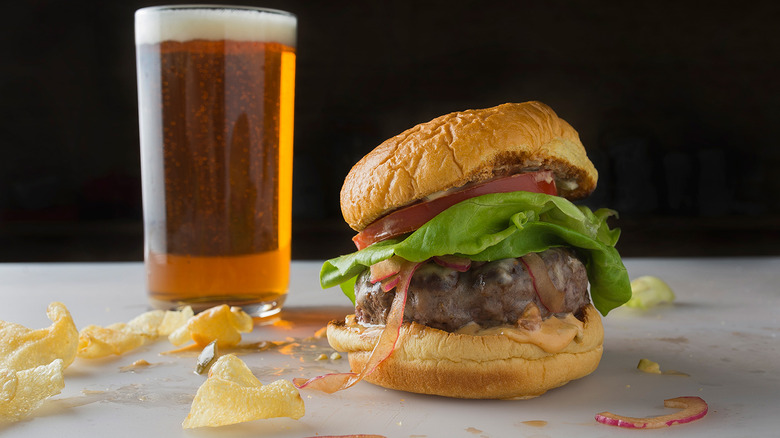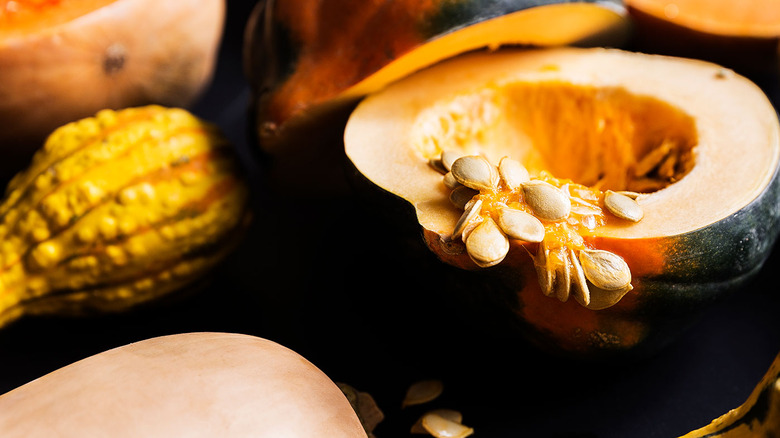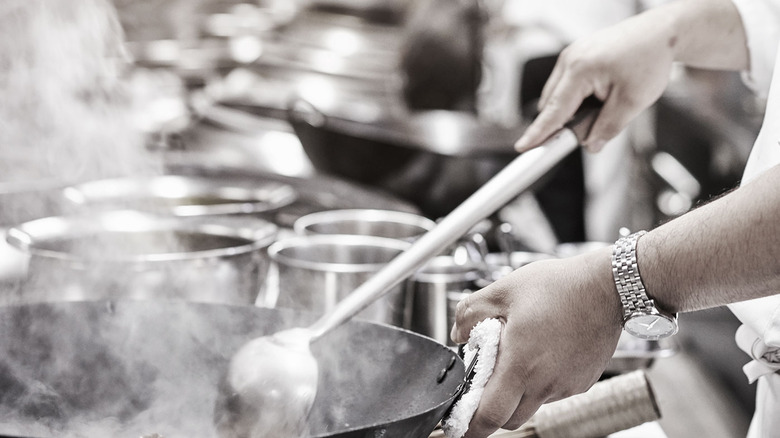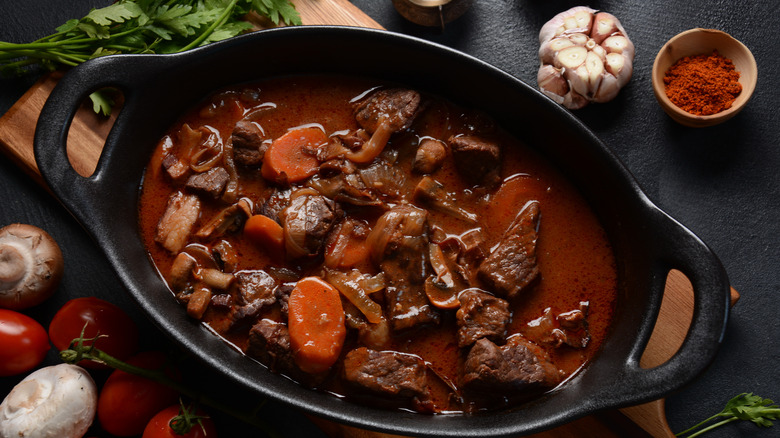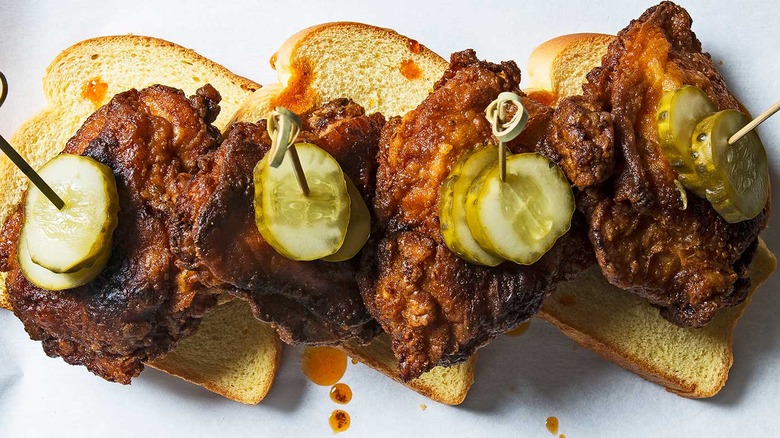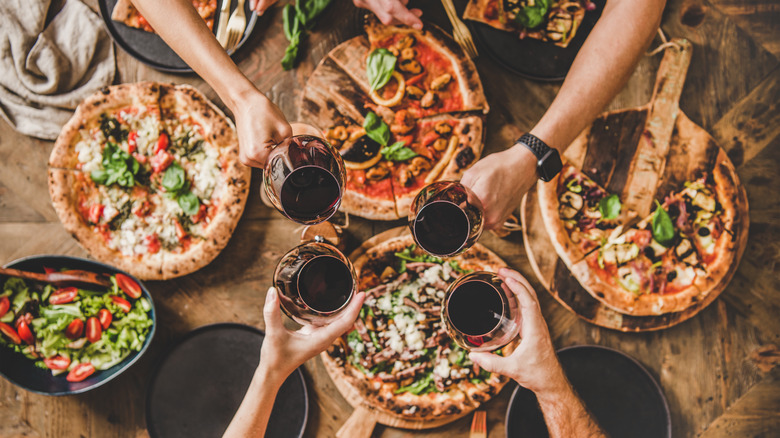What Is American Food?
Exploring the history of American taste as a story of immigrant appetites
Last year at the inaugural Slow Food Nations conference in Denver, I attended a panel discussion dealing with an issue too complicated to broach over dinner, let alone in front of a roomful of attentive listeners. Its title: There's No Such Thing as "American" Food. Its argument: more self-evident than it is controversial.
Just as our country was founded by immigrants on someone else's land, so, too, our cuisine, which was built by immigrants on someone else's foodways. And there's no arguing that the state of American food continues to endure this way—built cultural exchange by cultural exchange—some welcomed, others reluctant and, still, others forced.
The struggle to define American cuisine isn't a new one, but as our cravings for authentic flavors from all over the world continue to evolve, it seems like a more prevalent task than ever.
There are, however, no easy answers. In a world where information and ideas spread in an instant, what's alien today is as American as apple pie tomorrow. Never mind that the word American manages to ignore two entire continents. To take a long historical view, perhaps a better starting place is the fact that the all-American apple pie isn't actually native to the United States. It came, along with the apples themselves, from England.
No wonder the only definition I can come up with is a paradox: American food is foreign food until it isn't.
America: Land of the Native Roots
"The first settlers had come upon a land of plenty. They nearly starved in it."
So wrote Waverly Root and Richard de Rochemont in Eating in America: A History, tartly summing up colonial attitudes toward the New World's early food systems. Initially ill-prepared to provide for themselves, the Pilgrims did live on the corn and beans, squashes and pumpkins, wild turkey, deer, and bison that have come to symbolize our heritage, but only by relying on the indigenous peoples who knew how to cultivate, hunt and prepare them.
Eventually, the Pilgrims "set to work to end this disagreeable necessity" and were soon transforming the landscape in Europe's image, planting Old World grain and fruit crops for food as well as booze, raising cattle and pigs, building dairies, and launching fishing fleets.
So, as early as the birth of our country, we find that American taste is not quite American at all. By the time America could be charted on a map, its cuisine had essentially been imported, grafted onto native rootstock. From the cornmeal-and-rye loaves that became Boston brown bread to the seafood chowders combining local ingredients with European technique, the food of New England developed the same way all distinctive regional cuisines that came after did—through what food historian Adrian Miller describes as "people coming into contact with other people, seeing what they do and borrowing their ideas. Synthesis is the American story."
The Melting Pot
Perhaps American cuisine is better considered by its diversity and sheer quantity of "ethnic" restaurants that reflect the various populations that have come to America. This synthesis happens traditionally in either one of two ways. The first is through the classic melting-pot analogy, by which immigrants adapt their traditions and techniques to their adopted homeland and vice versa to create a new version of an old cuisine: Think Italian American with its pepperoni pizza and spaghetti and meatballs, Chinese American with its chop suey and orange chicken, Tex-Mex with its queso and fajitas. Also think of Seattle-style teriyaki, Cuban sandwiches or Irish American corned beef and cabbage—each a homegrown specialty derived through immigrant ingenuity from a foreign staple.
A Culinary Mixtape
The other way represents an integration more than an assimilation. I like Miller's "mixtape" metaphor, which asserts the exchange produces an entirely new cuisine. Consider the Southwest, with its interweaving of Hispanic, native and Anglo foodways, or the Creole cooking of Louisiana that combines French, Spanish, African and native elements. Or consider soul food, says Miller, author of a James Beard Award-winning book on the topic, "It's an original American cuisine because it's mixing the traditions of three different continents that weren't previously in close contact with one another—the Americas, Western Europe and West Africa."
Speaking of West Africans, their contributions to our culinary heritage, particularly in the South, simply can't be overstated. For one thing, they too transplanted crops we now associate with Americana, including yams, okra, black-eyed peas and watermelon. For another, the history and legacy of slavery tell us they were a major presence in the nation's kitchens, which Miller explains gave them wide latitude to "put their stamp on somebody else's food" and eventually make it their own—be it mac and cheese, the Coca-Cola brisket black cooks in Jewish households invented or the noodle dishes brought south by Chinese workers and reinterpreted by African Americans.
Granted, these truths are historically understated. Which brings us to the flip side of the mixtape: appropriation.
Appropriation and Reclamation
The difference between adaptation and appropriation is one of privilege—the privilege to control and inevitably whitewash the narrative surrounding a given dish. At a time when we're "questioning what it means to be American," as James Beard Foundation chief strategy officer Mitchell Davis put it in his introduction to the aforementioned panel discussion, recent examples are especially painful.
To take just one instance: Nashville-style hot chicken is a relatively new trend. But as Miller notes, the term itself "obscures the African American origin of the dish." He goes on, "I'm calling it Prince's-style hot chicken from now on," a nod to its juicy origin story of revenge gone wrong. Referencing the farm-to-table practice of menu transparency, he asks, "If you're telling me the names of the animals I'm eating and where the vegetables were raised, why can't you culturally source your dishes? I want a lot of different people to eat and cook soul food. I just want you to give a shout-out to where it's from."
Sonya Kharas agrees. As one of the Slow Food panelists, the program manager at The League of Kitchens, a cooking school in New York City (and, soon, Los Angeles) taught by immigrant instructors in their homes, observed that home cooks—to whom, I'd add, the vast majority work in the restaurant industry—"are often excluded from the conversation." In League workshops, by contrast, "the instructors are not in a service position—they're the hosts, the experts, the cultural ambassadors."
An Evolving Food Landscape
Which doesn't mean they need be constrained by their heritage. As Israeli-born fellow panelist Alon Shaya noted, he went from being "embarrassed by hummus" to cooking Israeli food in New Orleans."To me," Shaya added, "that's American." But so is "the opportunity to be flexible. Food that we see as traditional we want to capture in a certain place and time; when we talk about appropriation, we mean taking something out of context. But things are always evolving."
Besides, Mexican-born chef-panelist Dana Rodriguez pointed out, "I can give the same recipe to five people, and none of them will make it the same way. Another Mexican chef and I can make cochinita pibil, and it will taste completely different."
These answers point the way toward an American cuisine that's not merely diverse but radically pluralistic, its roots exposed rather than buried even as they sprout in new directions. There's room for Shaya to define and redefine Israeli cuisine in the U.S. by "looking in his own backyard" to incorporate Southern staples like black-eyed peas and fried green tomatoes in New Orleans, or "beautiful Colorado lamb and cherries" for the upcoming Safta in Denver. There's room for Miller to trace "all-American" barbecue styles back to their pre-Colombian roots while researching his next book. There's room for the League's Uzbek instructor, Damira Inatullaeva, to realize that, as Kharas quoted her, American food is "Italian, it's Chinese—and my hope is that one day Uzbek food will also be American food." (Kharas urges you to watch Inatullaeva tell her own story here.)
And there's still room for us all, Kharas added, to "celebrate the incredible skill and expertise that immigrants bring to our country," just as they have from the beginning, and to "have meaningful interactions" with others through food, "even in the face of what's happening on the larger political scene."
After all, without those cultural exchanges, we, too, starve in our land of plenty.
Ruth Tobias has been living, and writing about, the (mile) high life in Denver for 10 years and counting. Follow her on Instagram at @Denveater.
